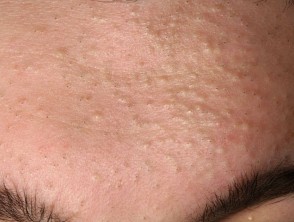
If you’re struggling with acne on your face, you may be dealing with comedonal acne. Comedones are small, clogged hair follicle pores. Sebum and skin debris accumulate in the papules. Comedones can be black or white and are usually located on the forehead and chin. They are usually more difficult to treat and can even lead to severe breakouts if left untreated.
This type of acne is often associated with the hair follicle and sebaceous gland, and it can be very painful and bothersome. Despite its name, comedonal acne does not cause any pain or inflammation, and it can be treated through good skin care habits and increasing the frequency of washing the face. Washing twice a day with gentle soap is crucial, and you should try to avoid using products that contain oil. You may also consider using over-the-counter medication to control the symptoms of comedonal acne.
Comedonal acne may also be accompanied by blackheads. Although comedones can be uncomfortable and irritable, they do not cause any pain or other signs of infection. It is important to wash your face thoroughly twice a day, with soap and water, and wear sunscreen when outside. You can also try topical treatments, which you apply once or twice a day, but it will take months to see results.
Comedonal acne is not painful or inflammatory, and there is no pus. You can manage it by improving your skin care habits and increasing your frequency of washing. You should wash your face with a gentle cleanser at least twice a day. You should also avoid skin products containing oil. You may also want to try over-the-counter medications to clear up the pimples. You should consult a doctor if you suffer from comedonal acne if you have no luck with this type of acne.
There are a number of different types of comedonal acne. Macrocomedones are large whiteheads and blackheads that are 1-3mm in diameter. Macrocomedones are the most common type of comedonal acne, and it is usually asymptomatic and does not require any medical treatment. However, it can still be difficult to treat if you don’t know what you’re doing wrong.
There are several ways to get rid of comedonal acne. Some people prefer to use heavy moisturizing creams or soaps. These types of creams can block the pores and lead to comedones. They are also prone to psychological stress. Aside from these, you can also try over-the-counter medications to clear up your skin. You should consult a dermatologist if you’re not satisfied with your current treatment.
Although most people don’t know what comedonal acne is, it’s a form of acne that doesn’t look like typical acne. It doesn’t contain pus, is non-inflammatory, and doesn’t cause any pain or other side effects. Nevertheless, it is important to understand the causes of comedonal acne before seeking treatment. For example, some people develop this type of acne as a result of a hormone imbalance.
Comedonal acne is a type of acne that occurs on the jawline, neck, and chin. It does not cause pain or inflammation and does not cause inflammation. The best treatment for comedonal acne is to change your skincare habits and increase the frequency of your daily washes. You should wash your face at least twice a day and use a mild soap. Over-the-counter acne medications can be helpful if you can’t afford a visit to the doctor.
Despite its name, comedonal acne is a type of acne that does not contain pus and does not cause pain. While it doesn’t cause pain, it can be difficult to treat, but you can find effective treatments for comedones. If you suffer from this type of acne, consult a dermatologist and visit the health website https://www.saludremediosar.com/ to find out how to manage your condition. You will be amazed at how easy it is to treat acne with the right care and a combination of homeopathic and prescription medicines.
Comedonal acne appears on the face and can also appear on the chest and upper back. Some of the most common triggers for this type of acne are oily moisturizers, excessive sun exposure, and stress. You can treat acne with tea tree oil or clay masks. You can also use topical retinoids and topical creams to help prevent future comedones.

